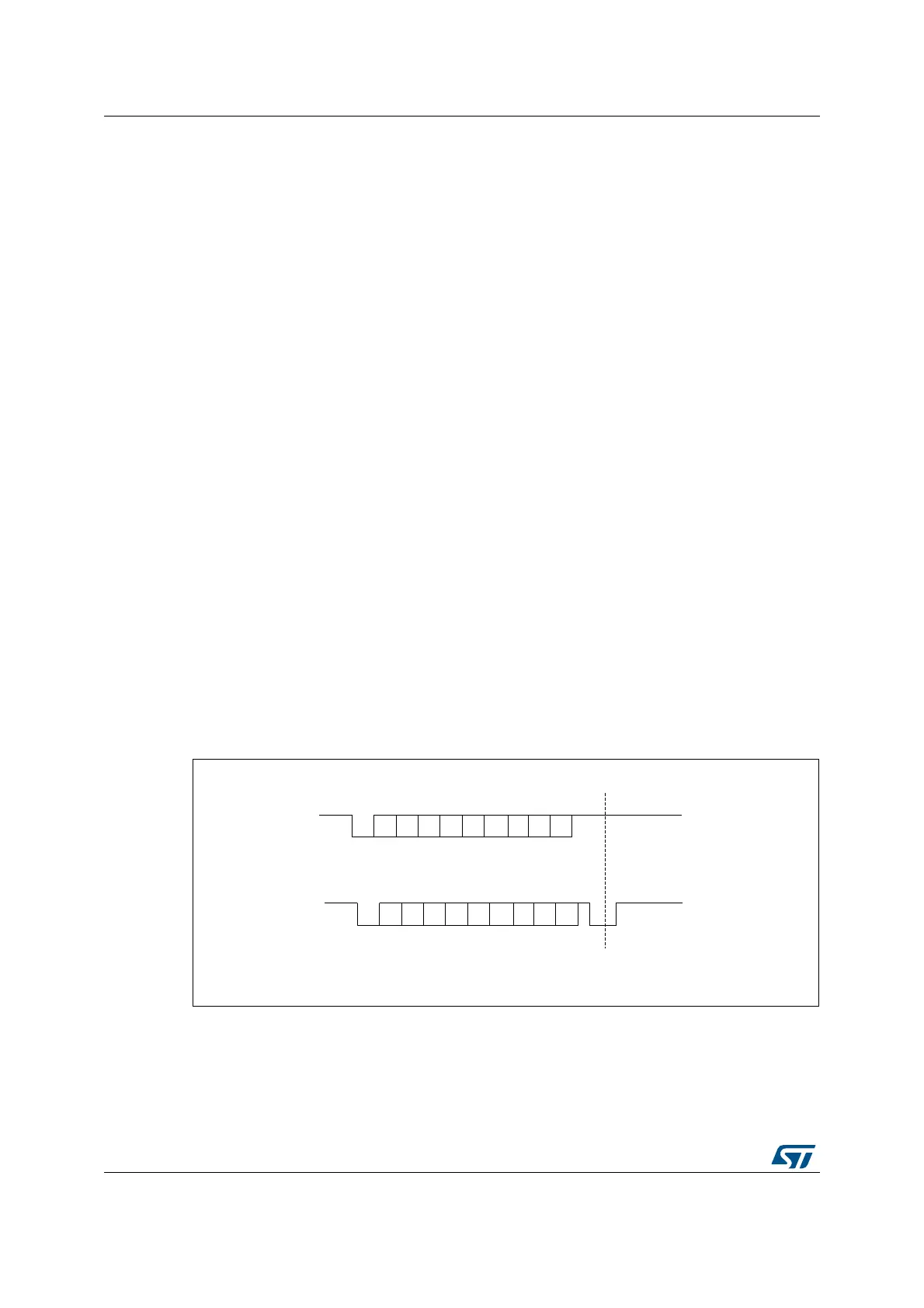Universal synchronous asynchronous receiver transmitter (USART) RM0390
826/1328 RM0390 Rev 4
As soon as HDSEL is written to 1:
• the TX and RX lines are internally connected
• the RX pin is no longer used
• the TX pin is always released when no data is transmitted. Thus, it acts as a standard
I/O in idle or in reception. It means that the I/O must be configured so that TX is
configured as floating input (or output high open-drain) when not driven by the USART.
Apart from this, the communications are similar to what is done in normal USART mode.
The conflicts on the line must be managed by the software (by the use of a centralized
arbiter, for instance). In particular, the transmission is never blocked by hardware and
continue to occur as soon as a data is written in the data register while the TE bit is set.
25.4.11 Smartcard
The Smartcard mode is selected by setting the SCEN bit in the USART_CR3 register. In
smartcard mode, the following bits must be kept cleared:
• LINEN bit in the USART_CR2 register,
• HDSEL and IREN bits in the USART_CR3 register.
Moreover, the CLKEN bit may be set in order to provide a clock to the smartcard.
The Smartcard interface is designed to support asynchronous protocol Smartcards as
defined in the ISO 7816-3 standard. The USART should be configured as:
• 8 bits plus parity: where M=1 and PCE=1 in the USART_CR1 register
• 1.5 stop bits when transmitting and receiving: where STOP=11 in the USART_CR2
register.
Note: It is also possible to choose 0.5 stop bit for receiving but it is recommended to use 1.5 stop
bits for both transmitting and receiving to avoid switching between the two configurations.
Figure 294 shows examples of what can be seen on the data line with and without parity
error.
Figure 294. ISO 7816-3 asynchronous protocol
When connected to a Smartcard, the TX output of the USART drives a bidirectional line that
is also driven by the Smartcard. The TX pin must be configured as open-drain.
Smartcard is a single wire half duplex communication protocol.
• Transmission of data from the transmit shift register is guaranteed to be delayed by a
minimum of 1/2 baud clock. In normal operation a full transmit shift register will start
06Y9
:LWKRXW3DULW\HUURU
S
6
*XDUGWLPH
:LWK3DULW\HUURU
S
6
*XDUGWLPH
6WDUWELW
6WDUWELW
/LQHSXOOHGORZE\UHFHLYHU
GXULQJVWRSLQFDVHRISDULW\HUURU

